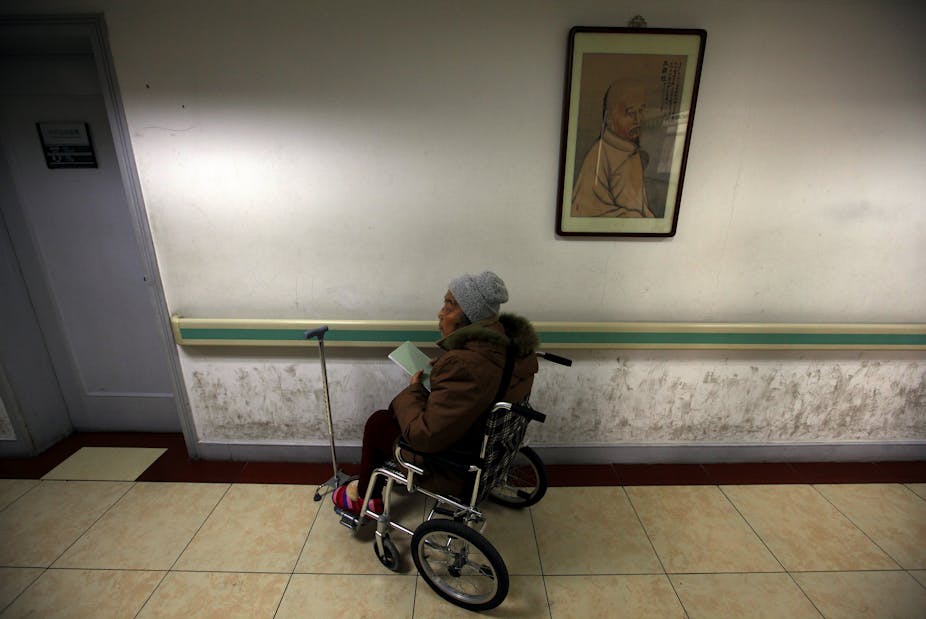All over the world, people are living longer. A large part of this is due to improved treatment for illness; we can see this in the reduction in death rates from cardiovascular disease and the 32% reduction in mortality from chronic obstructive pulmonary disease worldwide in the past 20 years.
There is no doubt that our prolonged life expectancy is a good thing, but improvements in treatment means that people are often living with many more chronic conditions, which can be very challenging to manage.
As it stands, health systems all over the world are built around institutions, not people, and are not equipped to manage the complexity of patients with multiple diseases, who often live with mental health issues and the personal burden and social isolation that comes from being ill.
Those living with multiple chronic conditions see their doctor often, are admitted to hospital more often, and receive support at home, but this is generally provided by different institutions that work separately from one another. This means the patients’ needs are often not met.
This is already a major issue in high-income countries, but it’s made even worse in middle-income countries such as China and India, where the number of people with multiple chronic conditions is rising. The rates of diabetes, cardiovascular disease and osteoarthritis are increasing due to increased age, dietary changes, and sedentary lifestyles.
Life with multiple chronic conditions
Picture an 80-year-old widow who has osteoarthritis, osteoporosis, cardiovascular disease and depression, and lives alone on a small pension in a big city. This woman has multiple chronic conditions that all have to be managed, and which involve many stages. Sometimes treating one condition will make another one worse.
In a high-income country, such as Canada, she might have three different specialists and a family doctor, be on six different medications, and be hospitalised a few times a year for problems relating to her existing conditions or new ones (such as pneumonia) that she is more susceptible to due to her frailty.
In a middle-income country, such as China or India, she might have one or two specialists or a generalist with limited training, none of whom can manage all of her conditions. She will have been prescribed a few medications, which she cannot afford, and she is occasionally hospitalised for chest pain or shortness of breath, but her low mood and joint pain prevent her from exercising or regularly taking medication to improve her heart condition.
Bearing the costs
The difference between these scenarios is the health system. One has insurance coverage and access to care, but care in both is poorly coordinated in both counts.
In high-income countries, like the UK or US, 5% of patients generate 50% of costs, and most of that 5% have multiple chronic conditions.
In many middle-income countries, patients bear most of these costs themselves. Those with multiple conditions are becoming the main “clients” of a system that was not designed for their needs.

In neither case does anyone engage with community groups or neighbours that might check on her and engage her in activities that would give her a reason to go out, improve her mobility, prevent a fall and possible hip fracture, and make her life more worthwhile.
New approaches
It’s not yet clear how best to integrate care for patients like this to improve their health and reduce costs, but many health systems are developing and testing new approaches.
In Toronto, Canada, the departments of Family Medicine, Medicine and Psychiatry launched an initiative to develop and test new models of care. Its approach was inspired by incubators for startups, which support companies proposing new services with promising but untested ideas and no existing clients.
Clinician leaders from primary care, hospital and community services were provided support for intervention design, study design, and analysis to develop and test new ways of providing care for people with multiple chronic conditions.
One model involved providing primary care in the home for frail elderly people, with a team that included a family doctor, nurse, geriatrician, case manager and physiotherapist.
Another provided simultaneous conferencing about cases with patients, care givers, the family doctor, an internist, psychiatrist, pharmacist and other health professionals to generate a comprehensive plan for care.
Building new health systems
This approach provides hope for middle-income countries. Ironically, the poor infrastructure in middle-income settings may actually allow them to create new structures rather than negotiating between large institutions with entrenched interests and established ways of working.
Established institutions in countries such as the US, Australia and Canada should also partner with middle-income countries such as China to share knowledge about how best to deal with these conditions.
The burden of an ageing population on health systems is only going to grow, in rich and poor countries.
We need to act now and in collaboration to change health systems around the needs of the highest users in high-income countries. And it’s not too late for middle-income countries to build patient-centered systems that meet those needs as they arise.
The issues discussed in this article will be discussed at the Fourth Global Symposium on Health Symposium Research in Vancouver.

